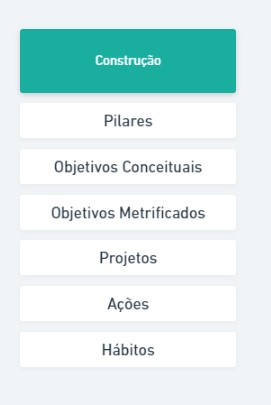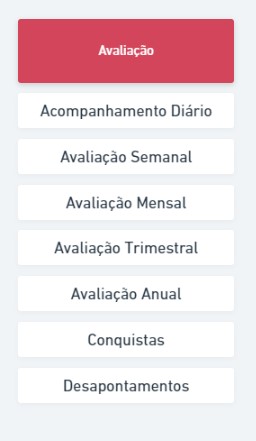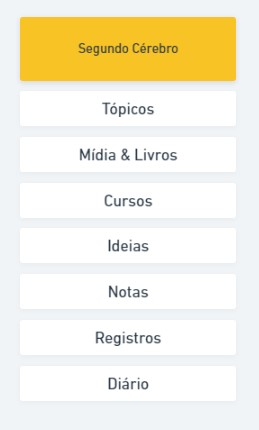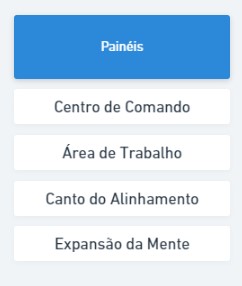Continuing this series on How to Organize Your Life in Notion, it is time to present how this organization is structured.
That is, what are the parts that we will create to achieve the maximum possible organization in our lives. These parts are the databases, pages and connections that we will make using the Notion tool.
In the last article of the series, we went through a reflection that we need to be clear about the principles and purposes we have for ourselves and for the life we want to live.
With this clarity, we can align our actions with what is really important for our goals and really manage to prioritize our days, weeks, months and years well.
This self-knowledge is very important to proceed and get the most out of this system, so if you haven't checked out the last article I suggest jumping there first.
The four big areas
I have tested and studied several organization systems. Some are specific to projects, others to our tasks and others to our notes. However, it is difficult to find a system that proposes to organize life as a whole.
One that is interesting and that we take advantage of a little here is the P.A.R.A., but it is somewhat simple for what we want to achieve.
There is no name yet for this type of organization, so let's go with life organization. And it has four areas:
- Construction
- Evaluation
- Second Brain
- Panels

I will explain each one in detail below, but here is a summary of the flow:
The construction area is where we have our tasks in alignment with our pillars and goals. It is where the records of our projects are and also how they relate to each other.
The evaluation area has all the records of our periodic reviews. Learnings, analysis, achievements and disappointments.
The second brain is the records, notes and documents area. It is where we take advantage of technology to store and organize much of our knowledge and ideas.
The dashboards are aggregators of information from all other areas. It is where we spend most of our time because it brings exactly the kind of information we need to know at the right time to move forward with our days in the best way.
Construction

Just as we saw in the last article, ideally we should always be able to connect the small actions and habits of everyday life with something bigger and more important to us.
An action for a job is connected to a project, which is connected to a metric goal, which is connected to a conceptual goal, which is finally connected to a pillar of our lives.
Understanding the connection in each important task makes it easier for us to prioritize and determine what is relevant to use our precious time to do.
Each of these six points represents a database in Notion. We take advantage of the functionality of the connection tool between two or more databases to relate these data and also to pass information from one to the other.
Assessment Area

Simply performing action after action, little task here and there, does not help us achieve our more complex goals.
Often when the year starts we are super excited about our end of year resolutions and new goals. However, after a few weeks the excitement ends, new urgencies appear and we only remember that we had a goal at the end of the year when we plan the same thing for the following year.
Having the habit of evaluating our days, weeks, months and years will contribute in two main ways
- We stay aware and mindful of our goals and objectives
- We have the opportunity to re-evaluate whether these goals are still valid for our moment
Something interesting about this is that while we reinforce our intentions for the goals we really identify with, we also have the ability to reflect on some goal that no longer represent us.
We are always changing and sometimes we no longer find old dreams or desires interesting. Sometimes we have such relevant experiences that we even change our way of thinking and our principles. All this can be readjusted when we are often looking inwards and evaluating our paths.
An extra benefit is also that we have the opportunity to contemplate the amount of things we do and also how far we are moving forward with our small actions every day.
Second Brain Area

The idea of a second brain is usually used to represent entire digital organizations in some methodologies. However, here I am using the term to refer to “only” the areas of records and information that we wish to keep for future reference.
Each of these items above in the image also represents a database and may be related to other databases as well.
I like to think of this area as the place to expand my mind. To explore knowledge. To get ideas. To keep notes and important information.
The nice thing about the way it is structured is that it invites us to understand our studies more holistically.
That's why we have the Topics database as the main one here. We all have areas of study and exploration that we find interesting.
- Entrepreneurship
- Marketing
- Health
- Bodybuilding
- Languages
- Personal Development
- Music
- Cinema
- Etc
In one week we can read a book on marketing, watch 3 YouTube videos on music theory, read an article on productivity and have a conversation with friends about philosophical issues in life that gave you new ideas for your business.
If we don't have a way to write down this information and organize it, the next week we remember virtually nothing and life goes on.
Now, with a second brain we can write down summaries of books, insights from videos and articles and the very idea we had in a place that is fully connected and ready to be accessed at any time.
And the cool thing is that in the reviews mentioned above we have a space to return to notes and topics to either strengthen some knowledge or bring an idea back to the table to be potentially executed.
Books, videos, articles, ideas and courses may be connected to a certain topic.
The result is that you may want to review what you know about productivity one day and you'll have a list of brief notes and insights ready to glance over and go right back to.
Dashboards area

Finally, we have the dashboards area. This is where everything really happens.
In my personal organization, I must spend 90 time in Notion in one of my panels.
The command center for me acts as an aggregator of links to my entire system as well as giving me information relevant to my day already as a temperature.
The desktop, on the other hand, is the panel that contains my tasks for the day and my calendar. Here I can see what is pending, prioritize the next days and also keep track of my daily habits.
The alignment center is where I return to review my principles and understand if there is still a clear connection between my actions and my life pillars.
Finally, the mind expansion dashboard brings the main topics I am currently exploring along with quick links to my notes.
Everyone here can also develop their own dashboards according to important areas of their life.
I, for example, have two more important dashboards.
- My business area
- Content production area
I manage my company through Notion. I have the list of my clients, projects, collections and I even have exclusive zones that I share with each client to follow their projects.
As I also produce content for my blogs and YouTube channels, I also have an area dedicated to organizing the production of this content. From ideas to references to old content.
Conclusion
The four areas together form the skeleton of our life organization. They are meant to make our lives easier, remind us of what we have to do each day, and ensure that we are following a constructive path towards our big goals and objectives.
Now I want to hear from you. Was this presentation clear? What do you think of this series? Leave a comment and tell me a bit about your impressions.
Have fun!

